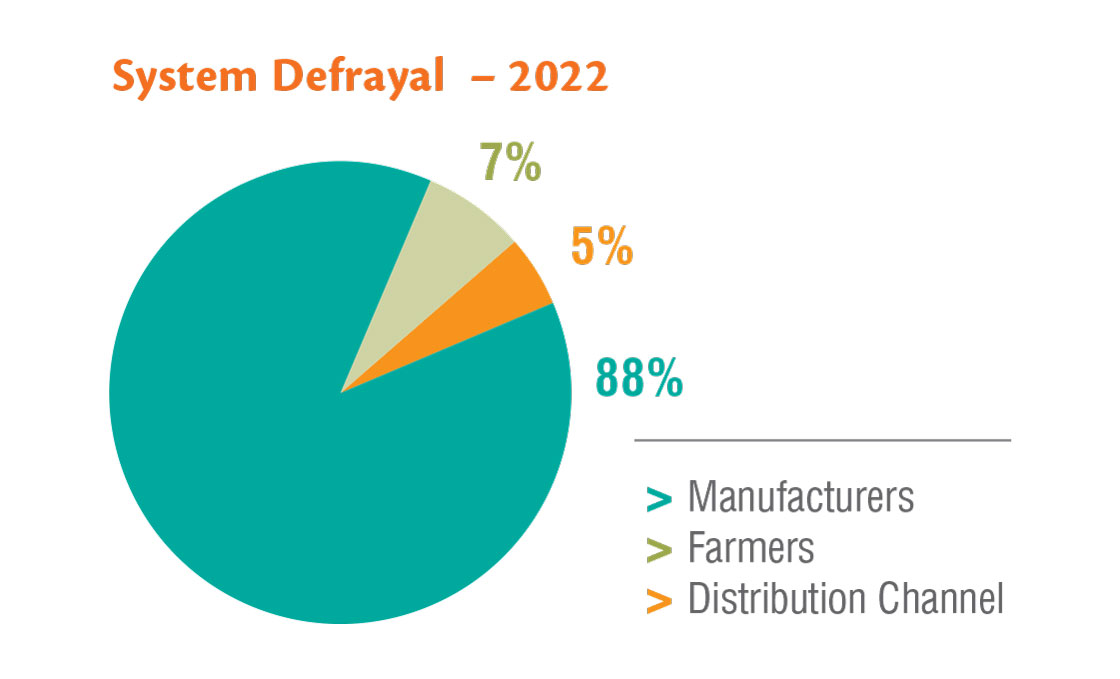Economic feasibility

I
npEV continued with the array of initiatives to increase revenues and decrease costs of the Campo Limpo System, which addresses the strategic objective of achieving the System's self-sufficiency. Along the year, self-financing corresponded to 76%.
With these actions, the reduction goal for financial contributions established for 2022 was exceeded by almost R$ 6 million. This was the second consecutive year in which the initially defined value was surpassed and, for 2023, an even more ambitious goal has been set.
Among the efficiency initiatives, flexible packaging recycling, which will start operating in 2023, should represent an annual cost reduction with incineration of around R$ 15 million.


+ R$ 1.8 billion
contributed by all links of the chain to defray the Campo Limpo System since 2002.
ECONOMIC-FINANCIAL PERFORMANCE1 (R$ million)
2020
2021
2022
Total asset
165.3
174.2
185.4
Total resources (inpEV + chain links) that defray the program – accumulated since 2002
1.399,0
1.696,6
1.821,1
Net revenue of the activities
146.0
156.5
199.1
Member contributions
69.2
56.4
45.4
Campo Limpo Property Lease2
11.2
16.8
23.3
Net equity
112.4
89.9
105.1
Net Indebtedness3
2.6
5.6
7.1
1 Since 2021, the accreditation fee, paid by recyclers to receive packaging shipped by inpEV and for technical cooperation with the Institute, has been considered as part of the consultancy revenue, which also includes the inpEV and the partnering central stations' defrayal fees. In 2022, the consultancy revenues corresponded to R$ 94.3 million (in 2021, the value was of R$ 79.2 million).
2 Rent paid by Campo Limpo Plastic Transformation and Recycling S.A. to inpEV.
3 Only considers obligations with suppliers, excluding obligations with central stations and outposts.